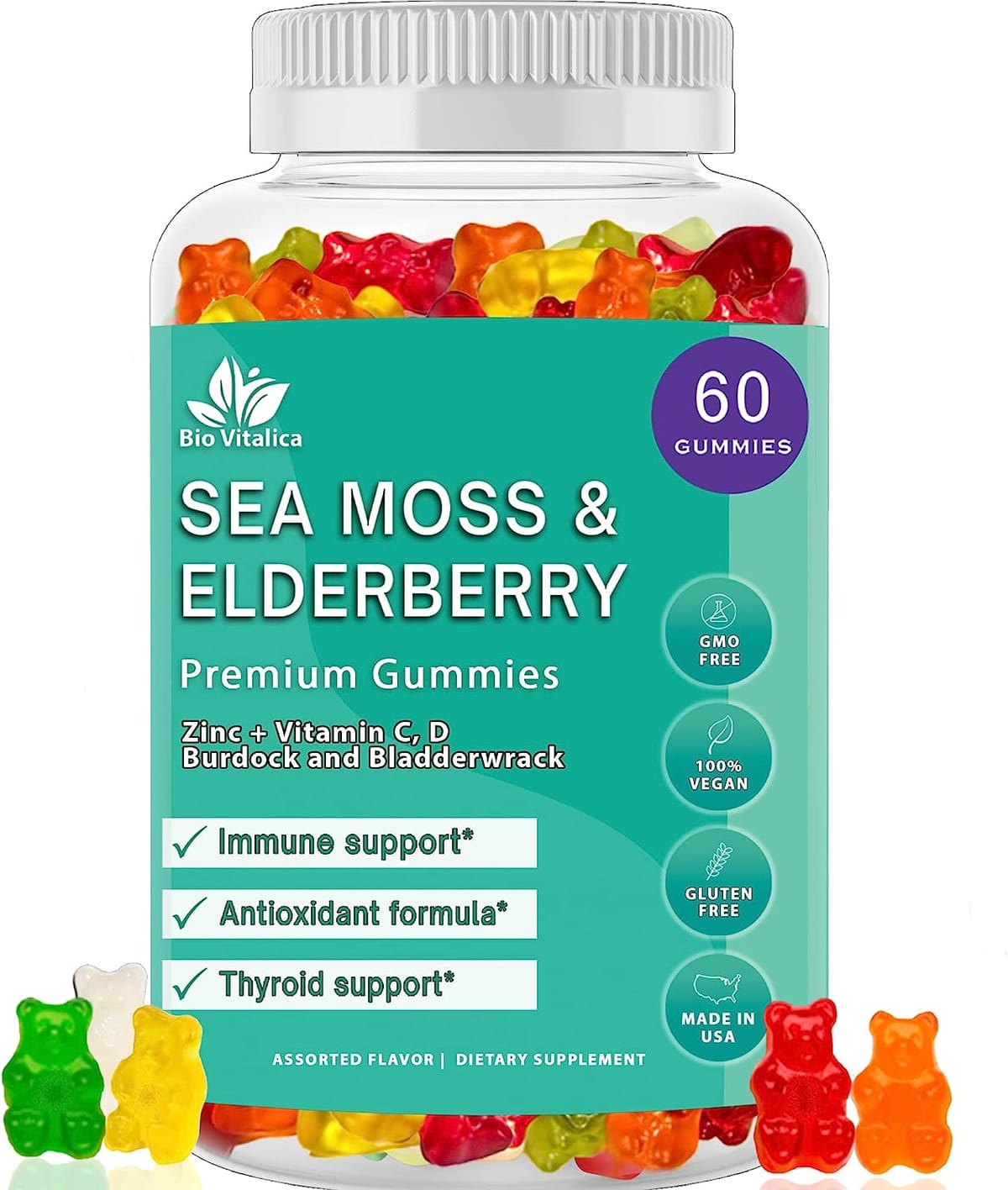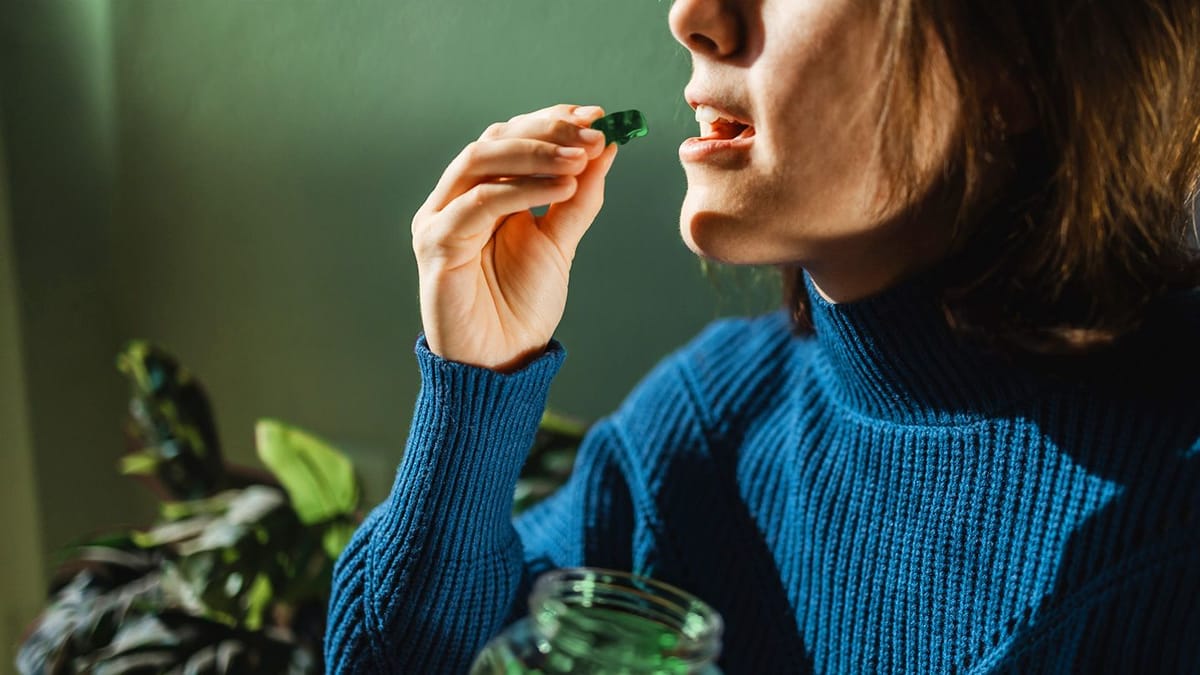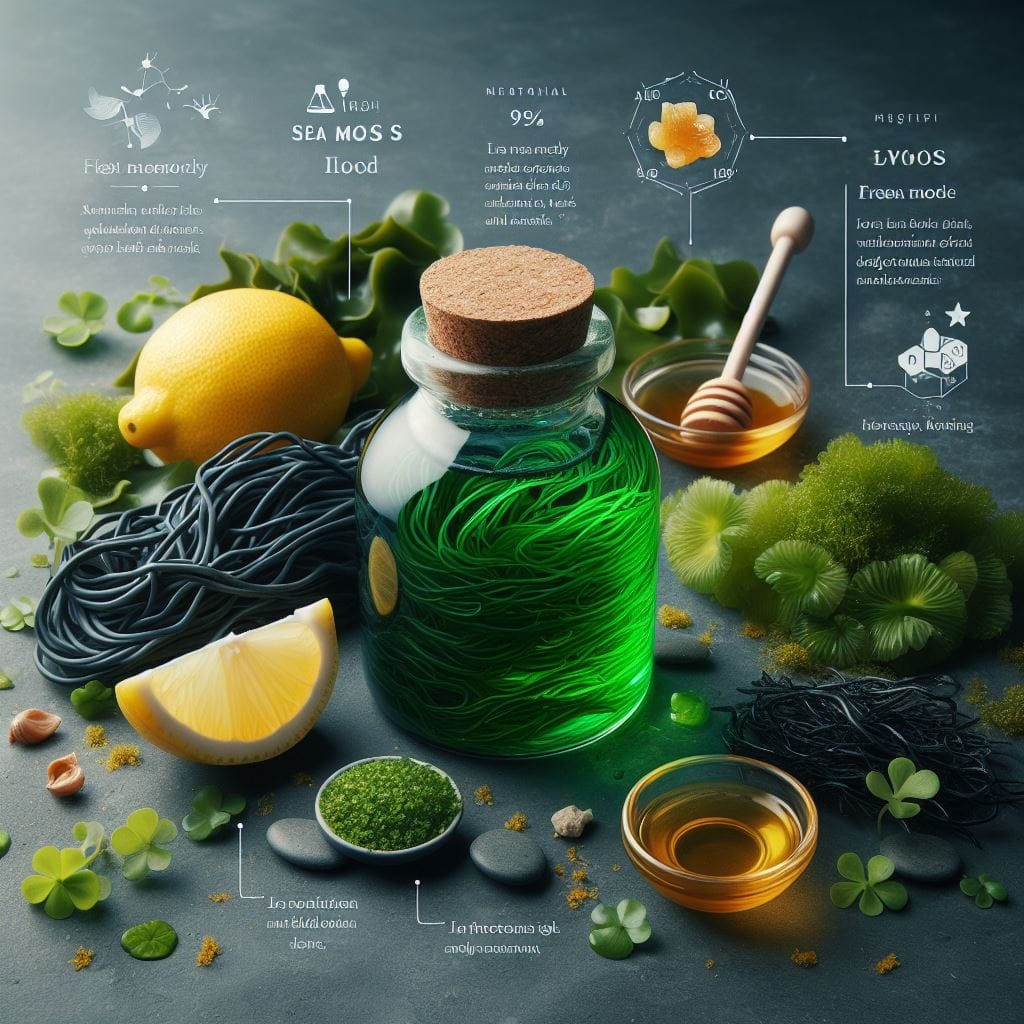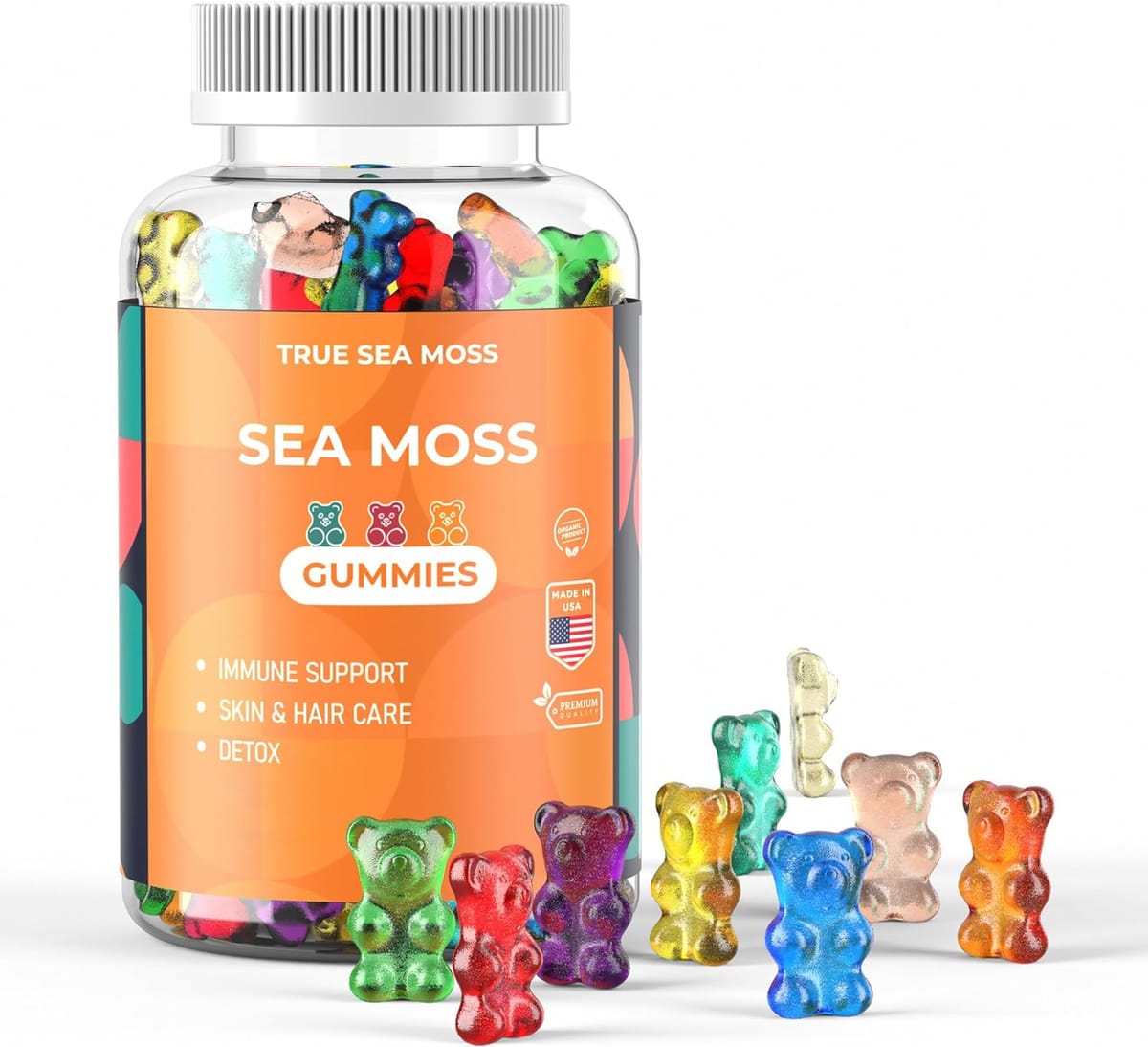Sea moss, a type of red algae also known as Irish moss, has been gaining popularity as an incredible superfood. Packed with nutrients and minerals, it's no wonder that many are eager to learn how to make sea moss at home. Whether you're looking to save money, ensure quality, or just enjoy the process, this comprehensive guide will walk you through everything you need to know.
Key Takeaways:
- Learn the step-by-step process of making sea moss gel from dried sea moss.
- Discover how to store sea moss gel properly to retain its immense health benefits.
- Understand the various uses of sea moss gel in recipes, as a hair mask, or for skin care.
Understanding Sea Moss
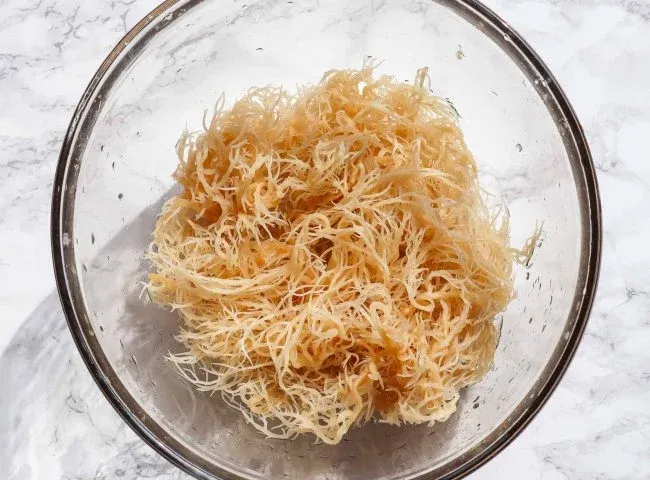
Before diving into the preparation process, it's essential to understand what sea moss is. Sea moss, scientifically known as Chondrus crispus, is a vibrant species of red algae that thrives along the Atlantic shorelines of the Caribbean Islands, Europe, and North America. Known for its dense nutrient profile, it's rich in amino acids, vitamins, and minerals, contributing to proper thyroid function and boosting the immune system.
Selecting the Right Sea Moss
When you're ready to make your gel, choosing high-quality Irish sea moss is crucial. Look for Lucia sea moss or other reputable brands that source their moss from clean waters. The genus Gracilaria is also a popular choice. Ensure that the dried sea moss is free from sea debris and pollutants.
Preparing Your Workspace
Before you start, ensure you have a clean workspace. You'll need a large bowl, a high-speed blender, and an airtight container. Keep filtered or spring water on hand, as it's preferable to tap water for soaking and rinsing your sea moss.
Cleaning the Sea Moss
Begin by thoroughly rinsing your dried sea moss in a large bowl. Remove any visible sea debris and rinse until the water runs clear. This step is vital to ensure that your sea moss gel is free from any impurities and has no slight seaweed taste.
Soaking the Sea Moss
Place the cleaned sea moss into a bowl and cover it with filtered or spring water. The soaking process is crucial as it allows the sea moss to expand and become more pliable. Soak overnight or for at least 12-24 hours for the best results.
Blending the Sea Moss
After soaking, you'll notice that the sea moss has absorbed much of the water and expanded significantly. Drain the excess water (which may be dirty water) and transfer the sea moss to a high-powered blender. Add fresh spring water to achieve the desired consistency and blend until smooth.
Making Sea Moss Gel
Once your sea moss is fully blended, it's time to make Irish moss gel. Pour the blended sea moss into an airtight container and refrigerate it. The mixture will thicken and turn into a gel as it cools.
Storing Sea Moss Gel
To store sea moss gel, keep it in the fridge in an airtight container. It can last up to three weeks when stored properly. For longer storage, you can freeze the gel in an ice cube tray and then transfer the cubes to a freezer bag.
Using Sea Moss Gel
Sea moss gel is incredibly easy to add to your diet. Mix it into smoothies, and teas, or use it as a thickening agent in gluten-free recipes. Its neutral taste makes it versatile for various culinary applications.
Incorporating Sea Moss into Gluten-Free Diets
Have you ever wondered if you can add sea moss to your gluten-free lifestyle? Well, it's fine to do so! Sea moss is a naturally gluten-free superfood, making it a perfect addition to the diets of those with gluten sensitivities or celiac disease. It's a versatile ingredient that can thicken soups, smoothies, and even homemade bread without the worry of gluten contamination. Plus, it's packed with nutrients that can help support a balanced diet.
Incorporating sea moss into gluten-free recipes is a breeze. Whether you're whipping up a big batch of gluten-free pancakes or a hearty stew, sea moss can act as a nutritious binder and thickener. For example, a high-speed blender can transform sea moss into a smooth gel that blends seamlessly into your dishes. This way, you're not only enjoying a meal that's safe for your dietary needs but also reaping the health benefits that sea moss has to offer.
Gluten-Free Sea Moss Delights: Recipes for the Health-Conscious
Have you ever considered the magic of sea moss in gluten-free cooking? It's a game-changer for those with gluten sensitivities. Sea moss, a versatile seaweed, is naturally gluten-free and can be used to enhance the texture and nutritional profile of various dishes. Imagine whipping up a batch of gluten-free bread, where sea moss gel acts as a binder, providing moisture and nutrients without the need for gluten. It's a perfect way to enjoy your favorite sandwiches and toasts without any dietary concerns.
Incorporating sea moss into gluten-free recipes doesn't stop at bread. Think about the smooth, creamy texture it can bring to soups and sauces without altering the flavor. Sea moss gel can be seamlessly blended into your favorite gluten-free Alfredo sauce, giving it a nutritional boost and a silky-smooth consistency. Or, if you're in the mood for something sweet, use sea moss as a thickener in gluten-free puddings or desserts. The possibilities are endless, and the health benefits are substantial, making sea moss an excellent ally in gluten-free cooking.
Discovering Gluten-Free Sea Moss Varieties
When embarking on a gluten-free lifestyle, it's essential to scrutinize every ingredient for hidden gluten. Fortunately, sea moss naturally joins the ranks of gluten-free superfoods, offering a wealth of nutrients without the worry of gluten contamination. Sourced from the pristine ocean waters, sea moss is a type of red algae that has been celebrated for its versatility and health benefits. It's a perfect addition to a gluten-free pantry, as it can be used to thicken soups, make smoothies creamier, and even create nutrient-rich face masks.
However, not all sea moss products are created equal. When shopping for sea moss, it's crucial to look for products that are certified gluten-free, especially if they come in powdered or capsule form. Cross-contamination can occur during processing, so always check labels and opt for reputable brands that understand the importance of maintaining a gluten-free standard. By doing so, you can confidently incorporate sea moss into your diet, knowing that it aligns with your gluten-free requirements and contributes to your overall well-being.
Gluten-Free Sea Moss as a Thickening Agent
Have you ever considered the role of sea moss as a natural thickener in gluten-free cooking? It's a game-changer for those looking to avoid gluten without compromising on texture. Sea moss, when prepared correctly, can transform soups, stews, and even homemade sauces into rich, velvety culinary experiences. Its neutral taste ensures that it enhances the dish without overshadowing the original flavors.
Moreover, sea moss is a fantastic alternative to traditional thickeners like flour or cornstarch, which contain gluten. By incorporating sea moss gel into your recipes, you can achieve the desired consistency while keeping your meals entirely gluten-free. It's a simple switch that can make a world of difference for those with gluten sensitivities or celiac disease, ensuring they don't miss out on their favorite thickened dishes.
Gluten-Free Sea Moss: A Digestive Aid
Sea moss, a gluten-free marine marvel, is not only a versatile ingredient in the kitchen but also a boon for digestive health. Rich in fiber, it can help to promote a healthy gut, which is particularly beneficial for those with gluten sensitivities or celiac disease. The prebiotic effects of sea moss encourage the growth of good bacteria in the gut, aiding in digestion and the absorption of nutrients.
Moreover, the soothing properties of sea moss gel can provide relief from inflammation and discomfort often associated with digestive issues. By incorporating sea moss into a gluten-free diet, individuals may experience an improvement in their overall digestive function. Whether added to smoothies or used as a gel base for desserts, sea moss is an excellent gluten-free option to support gut health.
Gluten-Free Sea Moss for Plant-Based Diets
Have you ever considered the synergy between a plant-based diet and gluten-free sea moss? It's a match made in health heaven! For those who embrace a lifestyle free from animal products, sea moss adds a nutrient-dense, gluten-free option that's as versatile as beneficial. Packed with minerals and vitamins, it seamlessly complements the nutritional profile of a plant-based diet, ensuring you don't miss out on essential nutrients often found in animal products.
Incorporating sea moss into your plant-based meals couldn't be easier. Think of it as a culinary chameleon; it can thicken soups, enrich smoothies, and even serve as a gelatin substitute in desserts without compromising your gluten-free requirements. From a morning smoothie to a hearty stew, sea moss can elevate your dishes, adding a burst of nutrition and a smooth texture that will delight your palate and support your health goals.
Sea Moss: A Gluten-Free Journey Through History
Did you know that sea moss has been a staple in traditional diets long before the term 'gluten-free' became a household phrase? This oceanic treasure has historical roots in coastal communities, where it was prized for its dense nutritional content and medicinal properties. It's fascinating to think that what we now recognize as a gluten-free superfood has been nourishing generations across the globe.
Exploring the historical use of sea moss opens up a world of culinary inspiration. From the rocky shores of Ireland, where it was boiled into a hearty, fortifying broth, to the tropical vibes of the Caribbean, where it's transformed into a refreshing beverage, sea moss has a storied past. Embracing this gluten-free gem allows us to connect with traditional practices while reaping the benefits of its timeless nourishment.
Sea Moss: A Gluten-Free Superfood for Athletes
Athletes following a gluten-free diet may find sea moss to be a hidden gem for its nutrient-dense profile and energy-boosting properties. This superfood is packed with essential minerals like iodine, potassium, and magnesium, which are crucial for maintaining energy levels and supporting muscle function. For those who need to avoid gluten, sea moss offers a way to replenish these vital nutrients without the risk of inflammation or digestive distress.
Incorporating sea moss into pre-workout smoothies or post-exercise recovery meals can help gluten-free athletes optimize their performance and recovery. The natural, plant-based collagen in sea moss also supports joint health, making it a valuable addition to any athlete's gluten-free diet. With its subtle taste and powerful benefits, sea moss is an excellent supplement for those looking to maintain peak physical condition while adhering to dietary restrictions.
Sea Moss: The Gluten-Free Energy Booster
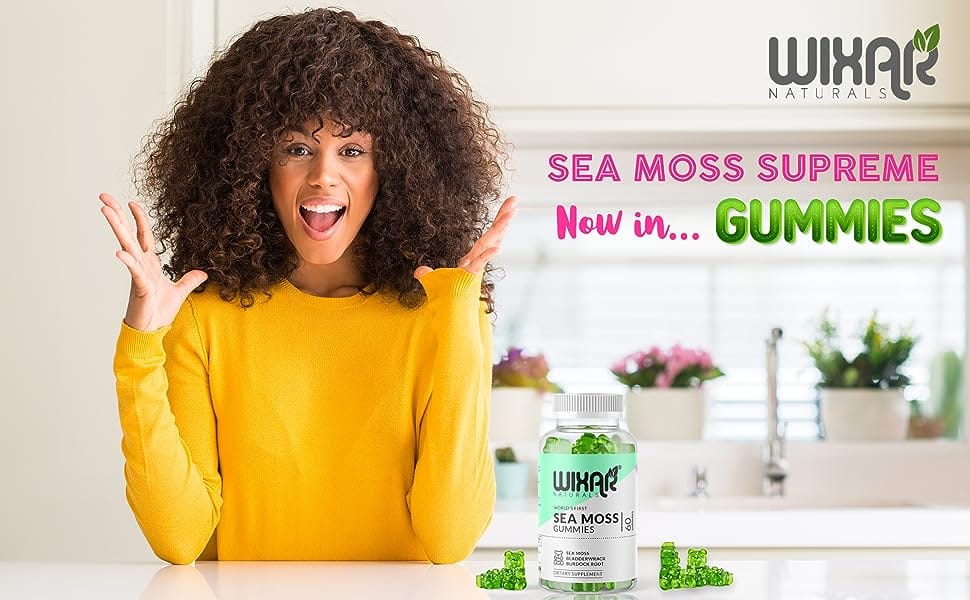
For individuals on a gluten-free diet, finding natural sources of energy that don't trigger sensitivities can be a challenge. Enter sea moss, a gluten-free superfood that's not only nutritious but also an excellent energy booster. Packed with essential minerals and vitamins, sea moss can be a vital component of a balanced gluten-free diet, providing sustained energy throughout the day.
Incorporating sea moss into your morning smoothies or as a midday snack in energy bars can help you maintain your energy levels without the fear of gluten contamination. It's a subtle yet powerful addition to your dietary arsenal, especially for those who lead active lifestyles and require consistent energy without gluten. Plus, the versatility of sea moss means it can be seamlessly added to a variety of recipes, making it an indispensable ally for the health-conscious.
Gluten-Free Sea Moss: A Culinary Adventure
For those on a gluten-free diet, sea moss presents an exciting culinary adventure. Its neutral taste and gelatinous texture make it an excellent thickening agent for a variety of dishes, from gluten-free vegan desserts to hearty stews. Imagine creating a luscious, gluten-free panna cotta, where sea moss gel replaces traditional gelatin, or thickening a berry compote without the need for flour or cornstarch. The possibilities are endless, and the health benefits are a bonus.
Moreover, sea moss can be a game-changer for gluten-free baking. It can help to bind ingredients together in the absence of gluten, which is known for providing elasticity and structure to baked goods. By experimenting with sea moss in your gluten-free recipes, you can achieve a desirable texture and add a nutritional punch to your homemade bread, muffins, and pancakes. As you explore the versatility of sea moss in gluten-free cooking, you'll discover that it's not just a substitute; it's an enhancement to your culinary creations.
Crafting the Perfect Gluten-Free Sea Moss Smoothie Bowl
Smoothie bowls are all the rage and for a good reason. They're not only delicious and Instagram-worthy but also packed with nutrients. Now, let's take it up a notch by adding sea moss to the mix. A gluten-free sea moss smoothie bowl is not just a treat for your taste buds but also a powerhouse of vitamins and minerals. Start with a base of your favorite gluten-free milk alternative, add a scoop of sea moss gel for that creamy texture, and then toss in fruits, nuts, and seeds of your choice.
The beauty of a sea moss smoothie bowl is in its versatility. You can go tropical with mangoes, bananas, and a sprinkle of coconut flakes, or keep it berrylicious with a mix of strawberries, blueberries, and raspberries. The sea moss gel not only thickens the smoothie to a spoonable consistency but also adds a boost of iodine, potassium, and other essential nutrients. It's a gluten-free recipe that not only satisfies your hunger but also supports your overall well-being. So, blend away and create a masterpiece that's as nourishing as it is delightful.
Maximizing Your Sea Moss Investment
When it comes to making the most of your own money, preparing sea moss at home is a smart move. By creating a big batch of sea moss gel, you can save considerably compared to buying pre-made products. It's a simple process that can be done with minimal equipment – all you need is high-quality sea moss, water, and a high-speed blender. Once you've made your gel, it can be stored in the refrigerator for up to a few weeks, ensuring you have a ready supply for your nutritional needs.
If you're new to making sea moss, don't worry – it's fine to start small and work your way up. There are plenty of video notes and tutorials originally published by health enthusiasts that can guide you through the process. By taking the DIY route, you're not only saving your own money but also gaining the satisfaction of creating something beneficial for your health. Plus, you can customize the consistency and quantity to suit your personal preferences, making your homemade sea moss gel truly your own.
Sea Moss in Skin and Hair Care
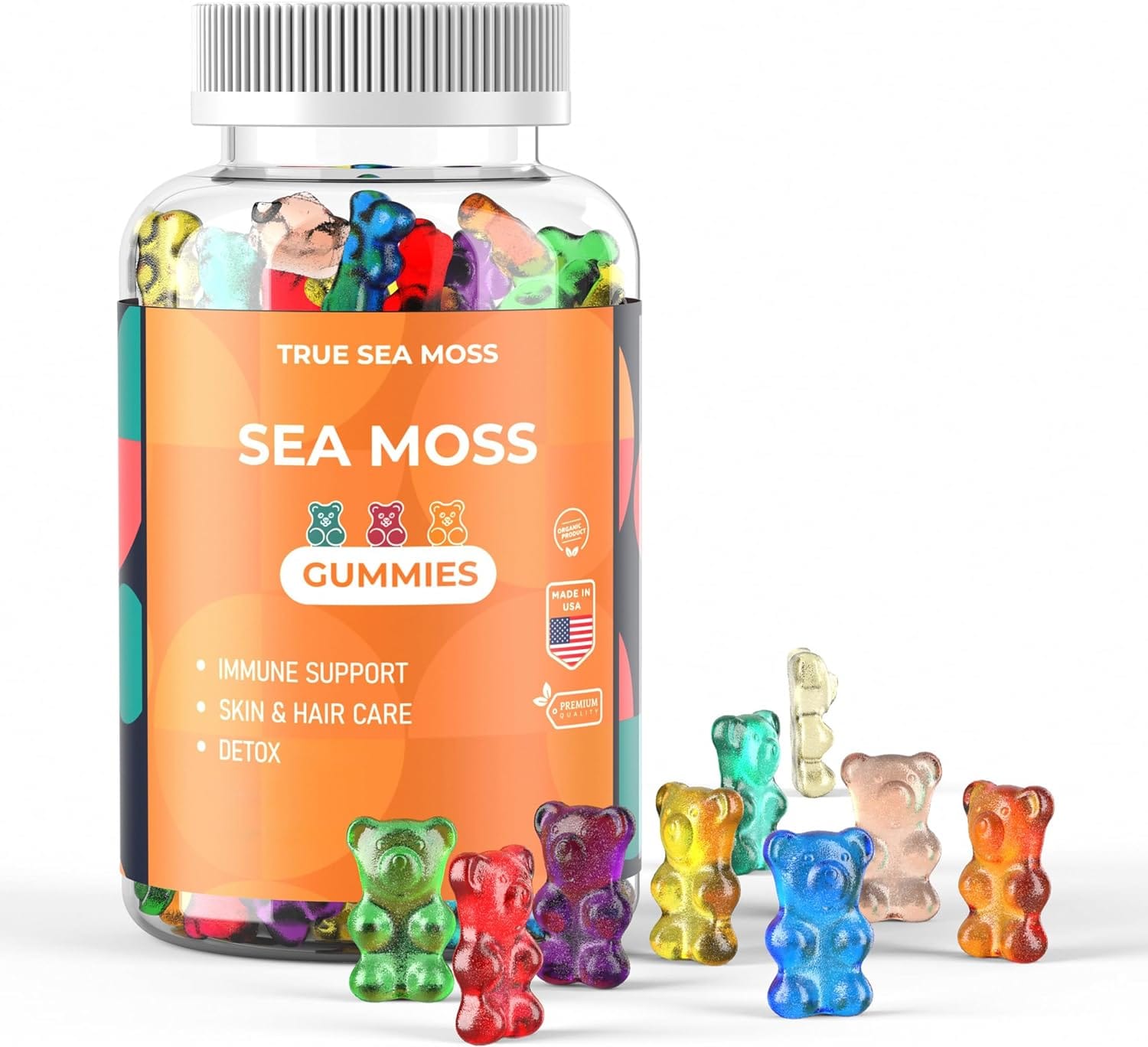
Beyond ingestion, sea moss gel can be applied topically as a skin or hair mask. Its nutrient-rich profile provides hydration and nourishment, promoting a healthy glow and aiding in skin and hair health.
Making Jamaican Irish Moss Drink
One popular way to enjoy sea moss is by making a Jamaican Irish moss drink. Blend sea moss gel with lime juice, sweeteners, and spices to create a refreshing and nutritious beverage.
Creating Recipes with Sea Moss
Explore a sea moss cookbook or blog post for recipes that incorporate sea moss gel. From soups to desserts, the possibilities are endless. Making your gel ensures that you reap all the benefits of this whole food in your cooking.
The Health Benefits of Sea Moss
Sea moss is known for its immense health benefits. It supports immune system function, aids in digestion, and promotes healthy skin. By making your sea moss gel, you ensure that you're getting the most out of this incredible superfood.
Doing Your Research
It's always recommended to do your research or consult with a healthcare professional before adding new supplements to your diet. While sea moss is generally safe, it's important to understand how it fits into your health regimen.
Saving Money with DIY Sea Moss
Making sea moss gel at home can help you save money in the long run. Buying dried sea moss in bulk and preparing your gel is more cost-effective than purchasing pre-made products.
The Environmental Impact
By making sea moss gel at home, you're also making an environmentally friendly choice. You reduce packaging waste and control the source of your sea moss, ensuring it's sustainably harvested.
Sea Moss Gel Consistency Tips
Achieving the perfect gel consistency might take a few tries. If your gel is too thick, add more water during the blending process. If it's too thin, use less water next time or blend a larger batch of sea moss.
Troubleshooting Common Issues
If your sea moss gel doesn't set properly, ensure that you've used enough sea moss and allowed it to refrigerate for enough time. If it has an off taste, make sure to clean the sea moss more thoroughly and soak it to remove any lingering sea taste.
Celebrating Your Homemade Sea Moss
Once you've mastered how to make sea moss gel, celebrate your success! Share your homemade gel with friends, or incorporate it into your meals and self-care routines. Enjoy the satisfaction of creating something beneficial for your body and wallet.

How do you prepare sea moss?
To properly prepare sea moss, begin by thoroughly cleaning it. Next, soak it in spring water for 12-48 hours. Once soaked, blend it into a smooth gel-like consistency. This process ensures optimal quality and maintains the original essence of sea moss.
What is the best way to get sea moss?
To acquire high-quality sea moss, it is advisable to purchase it from reputable health food stores or trusted online retailers. When making a selection, prioritize raw and organic options.
Is homemade sea moss good for you?
Absolutely! Homemade sea moss is incredibly beneficial for your health as it contains an impressive array of minerals essential for the human body. It boasts 92 out of the 102 minerals required, including vital elements like iodine, zinc, and iron. Incorporating this nutritious gem into your diet can do wonders for your overall well-being.
Can I eat sea moss raw?
Consuming raw sea moss is not advisable as it may harbor harmful bacteria. It is recommended to properly prepare it by soaking and blending or boiling it for optimal safety and enjoyment.
How much sea moss per day?
The optimal daily consumption of sea moss may vary, but typically, a moderate amount of 1-2 tablespoons of sea moss gel per day is considered adequate for most individuals.
Why is sea moss so expensive?
The cost of sea moss can be quite high, primarily because of its labor-intensive harvesting process, often carried out manually. Additionally, its surging popularity as a superfood further drives up the price.
Who should not take sea moss?
Individuals who have allergies to iodine or seafood, those diagnosed with hyperthyroidism, as well as pregnant or breastfeeding women, are advised to seek guidance from a healthcare professional before incorporating sea moss into their diet.
Does sea moss work?
Indeed, sea moss is renowned for its abundant nutrients and the potential it holds for enhancing our well-being. From bolstering immune function to promoting better digestion, it offers a myriad of health benefits that are truly remarkable.
Is it OK to drink sea moss?
Absolutely! When properly prepared, sea moss is perfectly safe to consume. It is commonly enjoyed in the form of a gel, which can be effortlessly incorporated into smoothies, teas, soups, and various other culinary delights.

Making sea moss gel at home is a simple and rewarding process. By following the steps outlined in this guide, you can prepare sea moss, make your gel, and store it for various uses. Not only does homemade sea moss gel offer numerous health benefits, but it also allows you to save money and contribute to a healthier environment. Remember to clean your sea moss thoroughly, soak it overnight, blend it to your desired consistency, and store it properly to enjoy all the benefits of this incredible superfood.
